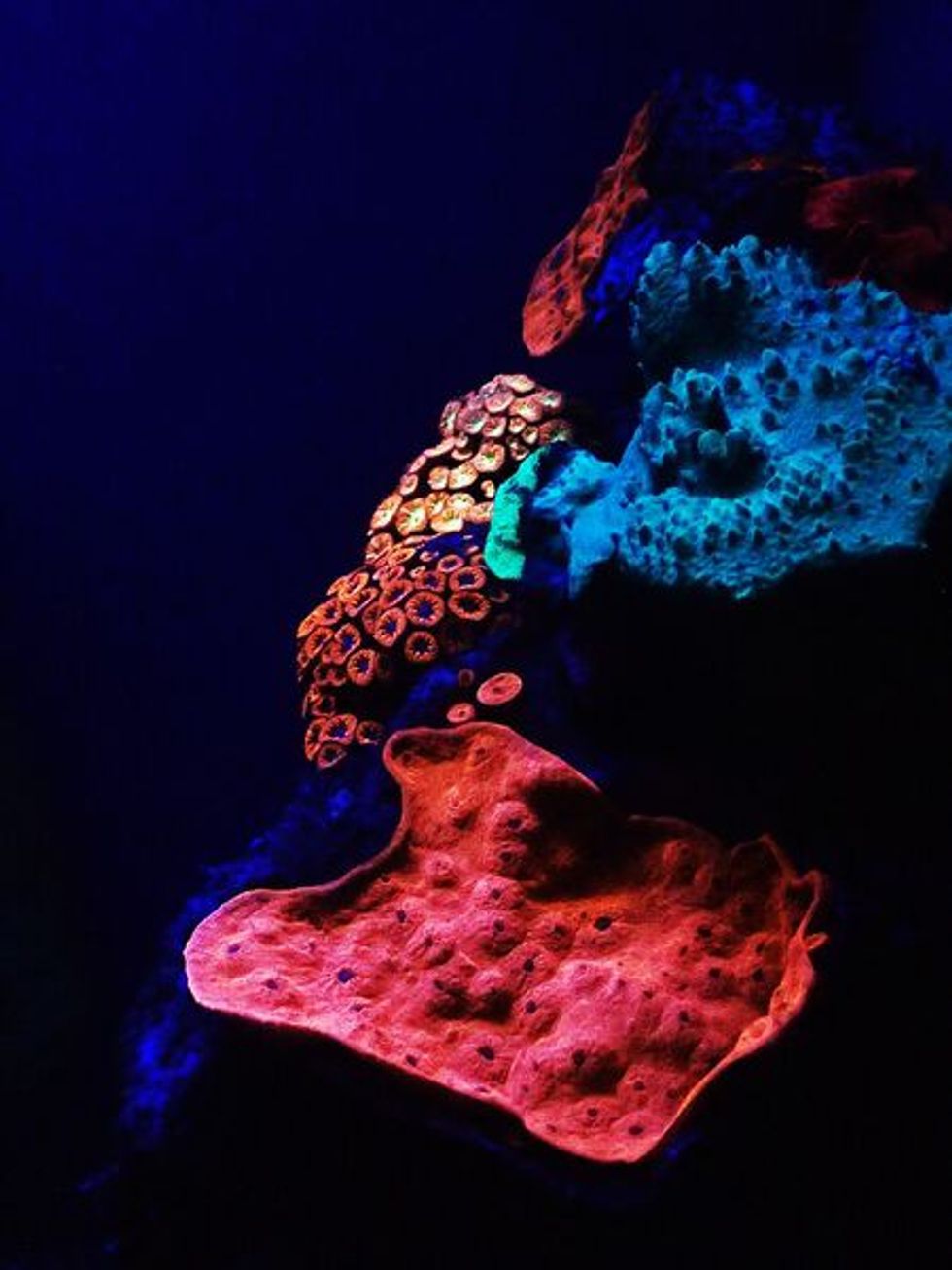
Photo credit: Prof. Jörg Wiedenmann\n

A stunning rainbow display of glowing coral was discovered in the deep waters of the Red Sea, and researchers believe it could have medical applications.
Most coral species exist in shallower waters, which makes the type discovered by scientists with the University of Southampton in the U.K. and Tel Aviv University in Israel all the more surprising and unique. In addition, the corals displayed a fluorescence when exposed to blue or ultraviolet light.

These corals, found in water around 160 feet to nearly 200 feet deep, ranged in color from green to yellow to orange and red.

Southampton professor of biological oceanography Jorg Wiedenmann explained that the fluorescent colors are caused by proteins that could applications in biomedical imaging.
"[...] as their fluorescent glow can be used to highlight living cells or cellular structures of interest under the microscope," Wiedenmann said in a statement. "They could also be applied to track cancer cells or as tools to screen for new drugs."

Deep water corals in mesophotic reefs, Ph.D student Gal Eyal with the Interuniversity Institute for Marine Sciences said, are less studied because they are "beyond the depth limits of standard scuba diving techniques." But he added that "advances in technical diving have enabled us to explore coral communities from these deeper waters."
Eyal added that the researchers were initially surprised to find coral exhibiting red, green and orange colors, which are common in shallow water reefs, because of the type of sunlight that typically reaches that depth.
"In many shallow water corals, the production of the pigments is tightly controlled by the amount and color of the incidental light," Dr. Cecilia D’Angelo, a research fellow at Southampton, said in a statement. "In the majority of our deep water species, the pigment production is essentially independent from the light exposure of the coral animals.
"We found, however, that some of the pigments of these corals require violet light to switch from their nascent green colour to the red hue of the mature pigment," she continued. "This is a particularly interesting property to develop markers for advanced microscopic imaging applications."
"We demonstrate experimentally that in some cases the production of fluorescent pigments is independent of the exposure to light; while in others, the fluorescence signature is altered or lost when the animals are kept in darkness," the researchers wrote in the study about the corals published in the journal PLOS One.
Watch this video showing the reef: